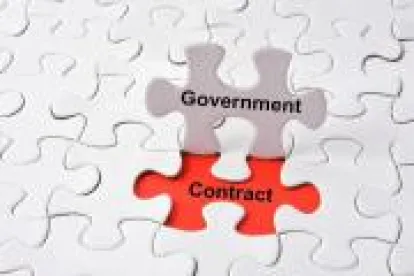Making the decision to engage your business in government contracting at the local, state or national level can admittedly be overwhelming, particularly for those new to the process. However, the potential benefits should outweigh the hesitations. According to an American Express OPEN survey, 57 percent of businesses noted their revenue grew significantly because of government contracting, at an average rate of 61 percent. This advisory provides a high-level overview of the process with a focus on federal government contracting, which is far and away the largest source of government contracting.
United States federal government contracting is an enormous business both nationwide and internationally, with total contract spending value in the hundreds of billions annually. In fact, the U.S. government is the single largest procurer of goods and services in the world. While the Department of Defense (DOD) accounts for most of the federal service and product acquisitions, there are myriad industries that are engaged in contracting with the U.S. government, providing products and services that range from paper clips to missile defense systems. Nevertheless, to take part in this seemingly endless source of opportunity, your business will want to make sure it is well prepared prior to embarking.
Complete Regulatory Basics
Any business legitimately (and legally) capable of doing business with the federal government must have a few basic regulatory tasks initially completed. To start, the government requires any potential contractor register its business with Dun & Bradstreet (D&B) and the System for Award Management (SAM).
The D&B system utilizes a nine-digit unique identifier number to manage a company’s credit profile so lenders and potential customers or business partners can better ascertain a company’s reliability and financial stability.
The SAM is the government’s central registration repository for all businesses, both large and small. However, before a business begins completing the D&B or SAM registrations, a business needs to be aware of its North American Industrial Classification System (NAICS) code. The purpose of the NAICS is to provide the government with a uniform method of classifying its purchases so it can track spending for reporting, funding and budgeting. Prior to tendering a bid or proposal, a prospective contractor must register with the SAM.
Broadly speaking, the SAM will require a contractor to:
-
Register under the company’s Data Universal Numbering System (DUNS) number;
-
List the NAICS Code applicable to the type of work the contractor performs;
-
Complete representations and certifications contained in the Federal Acquisition Regulation (FAR);
-
Identify the contractor’s bank account; and
-
Provide background information regarding the contractor.
Notably, a company’s information included on the SAM must be updated annually or when previously provided information deviates.
Furthermore, any contracts awarded by the federal government must first be approved by the federal government’s Contracting Officer (CO). A CO will only approve, in its discretion, what it determines to be responsible contractors. Specifically, the government will not enter into a contract with any business that:
-
owes back taxes
-
has a current or pending legal judgment with the government
-
does not have a checking account
-
is on the government’s excluded parties list
-
hasn’t completed the basic regulatory requirements for doing business with the government
Before moving on to the next step, potential contractors will want to ensure they have completed the above-mentioned registrations and completed a self-diagnostic on their business to identify and address any potential hindrances, including those listed above, that may currently exist.
Finding an Opportunity
The process for seeking business from the federal government is largely comparable to the process of obtaining business in the private sector. As in the private sector, marketing a service or product to the government depends on identifying relevant markets and potential government customers suited to your businesses capabilities.
In the realm of federal government contracting, there are numerous sources available to help pinpoint opportunities suited for your business. Below are some of the main portals of entry into federal government contracting opportunities.
GSA Schedule
Obtaining a General Services Administration (GSA) schedule contract is perhaps the most common form of federal government contract. The GSA is the “acquisition arm” of the federal government, playing a key role in connecting the private sector with the relevant federal agency seeking a fulfillment need. Any person/entity interested in selling their products and services to the federal government should prepare by making sure they have satisfied the applicable requirements and registering in the appropriate systems. Any prospective vendor who wishes to be included on a GSA Schedule can find more information here. The primary contract vehicle is the GSA Schedules, or Multiple Award Schedules, program. Additionally, any prospective vendor should develop a sales and marketing strategy for how that vendor will be targeting specific government contracts.
To be eligible for a GSA Schedule contract, a vendor must have been in business for at least two years and be able to provide two years’ worth of financial statements. In this regard, a company must be able to demonstrate it has measurable past performance. If a company does not have previous federal contracting experience, it may use federal and non-federal references from six or more previous customers, in part to obtain a past performance and evaluation Open Ratings report through Dun & Bradstreet.
FedBizOpps
Federal Business Opportunities (FedBizOpps) is a point of entry for business to seek out federal government contracting opportunities with a value of over $25,000.
GWACs
The federal government is a massive purchaser of hardware, software and related services through Governmentwide Acquisition Contracts (GWAC).
Subcontracting
Another way to get involved in federal government contracting, albeit indirectly, is to serve as a subcontractor for a company that has been awarded a government contract (known as the “prime contractor”). Agencies may provide information on their websites about firms to which they have awarded contracts. As an example, the GSA and SBA maintain subcontracting directories and databases. Subnet is another database of subcontracting opportunities. Other potentially useful sources of information include trade and business publications, the SAM website, company websites, and the Federal Procurement Data System (FPDS). Information obtained from these resources might indicate which companies have received, or plan to receive, government contracts.
One note before moving ahead: take the time to thoroughly research a potential contract opportunity and plan your “elevator pitch” and capability statement for said opportunity before making an offer. It will pay off in the long run.
Offering on a Contract
After you have completed the necessary registrations and found an opportunity that fits your business, you are ready to jump into the offer pool. There are two types of offers when it comes to government contracts – bids and proposals. Bids are generally used in sealed bidding purchases, while proposals usually involve contract awards to be made following a negotiation process. Three of the main offer types are briefly described below:
-
Request for Quotation (RFQ): An RFQ is generally used for proposed contracts with a value of less than $150,000. The benefit is that this method is usually relatively simple and focuses mainly on price and delivery capabilities.
-
Request for Proposal (RFP): Typically for acquisitions sought with larger values than an RFQ, a potential contractor will be required to provide additional details about how they would be able to complete a specific project or develop a specific product.
-
Invitation for Bid (IFB): In a similar vein to an RFP, an IFB is generally used for projects with a value of over $100,000. Potential contractors submit a sealed solicitation/bid for government procurement. This process typically does not involve any outside negotiation between a potential contractor and the government vendor seeking the acquisition.
It is crucial that the information provided in an offer (whether it is for an RFQ, RFP, IFB, or otherwise) is factually sound and inclusive of any pertinent material a CO would need to make its evaluation. A company will want to provide as much information as possible without overwhelming the CO. However, make sure not to overpromise on any proposal, particularly related to technical specifications (if required), as this will become part of the contract in the event your proposal is selected.
Submit an Offer
Once you have identified an opportunity, double-checked everything included in your bid and/or proposal and have satisfied all the rules for the submission process, you are ready to submit your offer. As a parting word of advice, do not make the mistake of assuming offering the lowest price is the key to winning a government contract. A company’s experience and history of providing excellent service in its respected field is as important, if not more important, than the actual offer value.
The evaluation and award process begin when a government procurer receives bids/offers. This process can vary greatly regarding timing (often between 30 and 120 days) and ultimate acceptance of a bid. Stay patient, be prepared to provide any necessary follow-up information, keep in regular contact with the assigned CO (without being too pushy), and continue to set your business up for success should your offer be accepted.
The information provided in this advisory is a starting point to prepare your business for contracting with the federal government.




 />i
/>i

